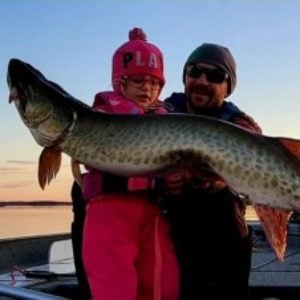Used autochart live for first time through the ice, what a great tool for locating depth changes. Drilled a bunch of holes and recorded in each one, pretty cool how much different it is than lake chip
IDO » Forums » Fishing Forums » Ice Fishing Forum » Autochart Live ice fishing
Autochart Live ice fishing
-
 Oxfish
Posts: 16February 23, 2021 at 9:03 am #2017113
Oxfish
Posts: 16February 23, 2021 at 9:03 am #2017113It is way different than my Navionics + chip as well.
The Navionics depths seem very inaccurate to me in some areas. Up to 10 ft difference than the actual depth. Anyone else notice this? Dash Adams
Posts: 68February 23, 2021 at 9:19 am #2017119
Dash Adams
Posts: 68February 23, 2021 at 9:19 am #2017119This is a cool idea – I just bought a Garmin 73cv UHD and I’ve thought about trying the quickdraw contours feature for making maps on ice.
I’m curious
How much area do you think you mapped with one hole?
Did you adjust your depth readings as your transducer would be likely a couple feet down the hole?
February 23, 2021 at 9:37 am #2017125I’ve been using this more for the bottom hardness, great way to find transitions; may have to adjust the bottom hardness min/max as the default settings wasnt showing much
February 23, 2021 at 9:42 am #2017128It’s great technology that I use in the boat as the maps available for the river are marginal at best. However, you would have to drill a ton of holes to really create an accurate map that covered more than a real small area. You are essentially using it as a “connect the dots” approach with estimations of smooth transitions between each hole you drill and graph from. If you are trying to pin down a “spot on the spot” area this strategy will be tough.
You are much better off using the autochart from a boat in the fall before ice fishing, then using the map you created later while ice fishing. This is far less work and creates a much more useful map. When in the boat, it’s effectively drawing and redrawing contours in real time. I grid out an area and then will often leave autochart on while trolling the fishy spots to further fine tune the map being created. If autochart is not making any corrections or adjustments on your screen to previous runs in real time, you know you have it nearly perfect.
 Reef W
Posts: 3212February 23, 2021 at 9:48 am #2017131
Reef W
Posts: 3212February 23, 2021 at 9:48 am #2017131You can also check if there is any mapping uploaded by others for you to download, there might be for popular lakes/areas. On Burntside I noticed how wrong the map is and, unfortunately, there isn’t much Garmin data to download from there, but you can see from this how bad the regular map is compared to where someone uploaded:
 OG Net_Man
Posts: 903February 23, 2021 at 10:38 am #2017141
OG Net_Man
Posts: 903February 23, 2021 at 10:38 am #2017141How close are you drilling your holes to each other? I do not claim to be a expert but due to cone angle I would think that a stationery transducer in a hole would not give you as accurate of map detailing as a moving transducer such as on a boat application.
 hnd
Posts: 1585February 23, 2021 at 12:37 pm #2017176
hnd
Posts: 1585February 23, 2021 at 12:37 pm #2017176in my boat any body of water i’m on i run quickcontour on my 73cv and the difference is absolutely mind boggling compared to navionics.
 tswoboda
Posts: 9527February 23, 2021 at 12:47 pm #2017182
tswoboda
Posts: 9527February 23, 2021 at 12:47 pm #2017182You are essentially using it as a “connect the dots” approach with estimations of smooth transitions between each hole you drill and graph from.
That’s exactly how any topo map is created, connect the dots.
February 23, 2021 at 12:52 pm #2017184<div class=”d4p-bbt-quote-title”>buckybadger wrote:</div>
You are essentially using it as a “connect the dots” approach with estimations of smooth transitions between each hole you drill and graph from.That’s exactly how any topo map is created, connect the dots.
Yes, except in the ice fishing application you have a miniscule amount of data points that require a lot of physical work and far less accuracy. You could accurately map an area in a boat with thousands of data points in 5 minutes that takes you days on the ice.
You must be logged in to reply to this topic.
